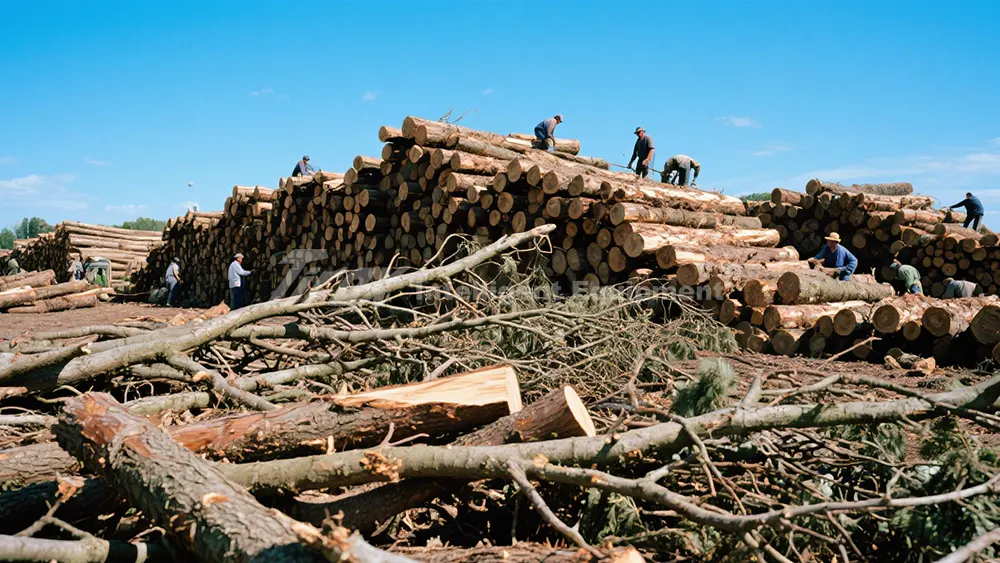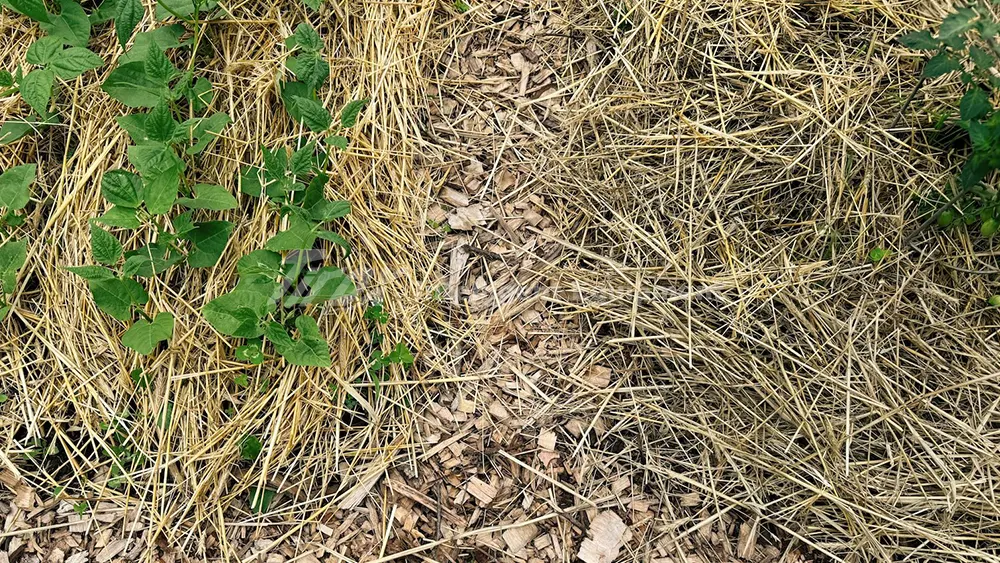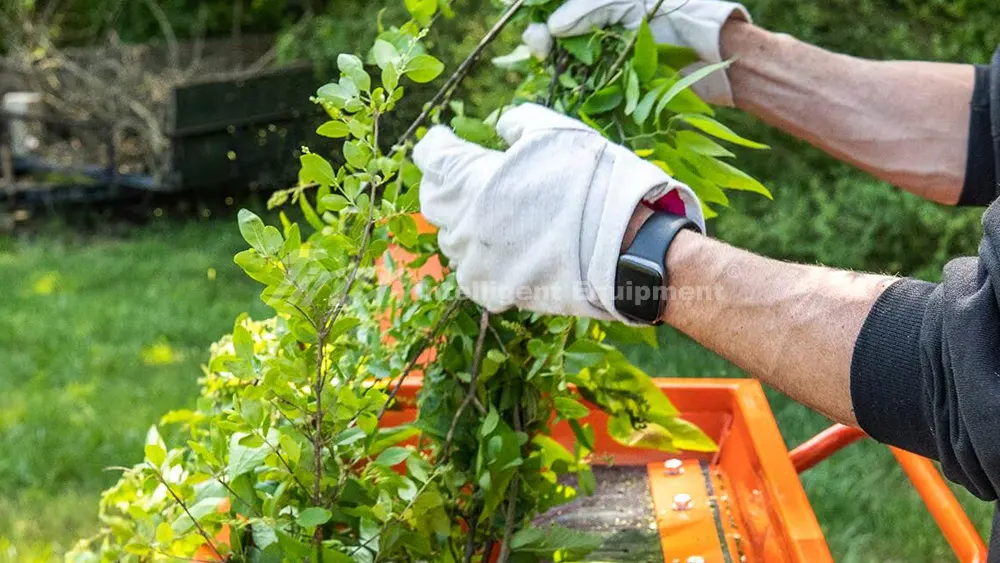You’ve got a tangled mess of vines, perhaps from clearing an overgrown area or after pruning. They’re bulky and hard to manage, leading you to wonder if your trusty wood chipper can turn them into something more manageable.
While small, woody vines can occasionally be processed, putting large quantities of flexible, stringy vines into a standard wood chipper is generally not recommended, as their fibrous structure tends to wrap around cutting mechanisms and cause severe clogs, which can be dangerous and inefficient.
In my 22 years at TIROX, manufacturing and exporting wood processing equipment, I’ve seen customers try to put almost everything into a chipper. My machines are designed to make quick work of wood. What I’ve learned is that not all organic material is created equal when it comes to chipping. Stringy, flexible materials like many types of vines behave very differently from solid branches, potentially causing frustrating jams.
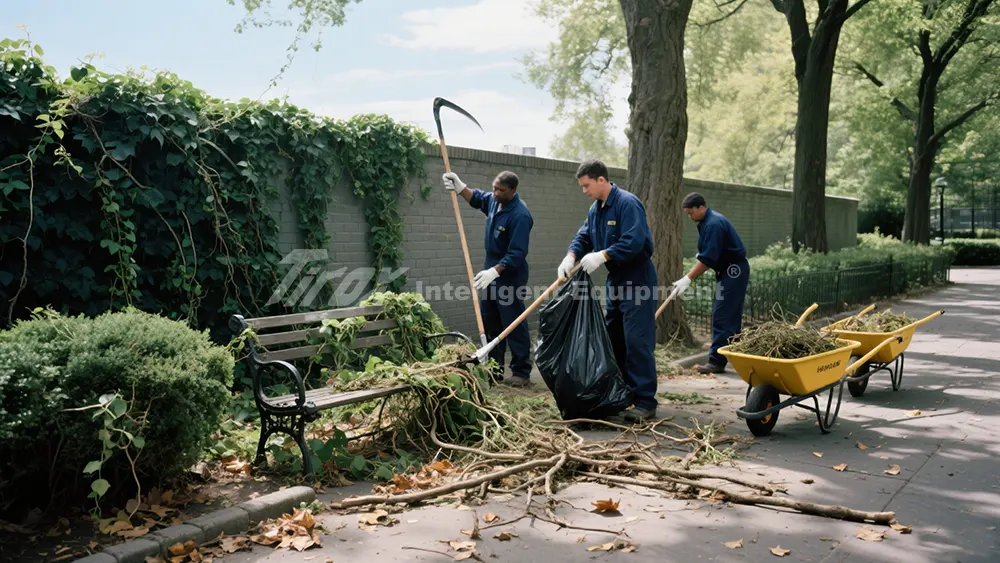
The Challenge with Vines in Chippers: Why Do They Cause Problems?
You might think if it’s organic and grows, a chipper can handle it. But with vines, there’s a fundamental difference in their structure compared to the wood a chipper is designed for.
Vines, with their long, fibrous, and flexible nature, are particularly problematic for standard wood chippers because they tend to wrap and tangle around the cutting blades, feed rollers, and discharge chutes instead of being cleanly cut, leading to frequent and severe clogs.
From my perspective, the design of a wood chipper is optimized for ‘cutting’ solid, brittle wood. Our chippers utilize sharp blades on a rotating disc or drum that slice through material. This works perfectly for branches and logs. However, vines are different. They are more like rope than wood. When you feed them into a chipper, instead of being cleanly severed, their flexibility allows them to bend and wrap. This can quickly create a tangled mass around the cutting mechanism or the feed rollers. I’ve often advised customers that trying to force large amounts of vines through a chipper is like trying to cut string with an axe – it’s just not the right tool for the job.
Why Standard Chippers Struggle
The core issue with vines in a wood chipper stems from their fibrous, non-rigid structure. A chipper relies on the material being stiff enough to be cleanly sheared by the blades. Vines, especially species like ivy, honeysuckle, or wisteria, lack this rigidity. They bend and flex under the force of the blades or rollers, causing several problems:
- Wrapping: Long strands of vines can literally wrap themselves around the chipper’s rotating parts, including the cutting drum or disc, the feed rollers, and even the engine shaft. This can put immense strain on the machine’s components.
- Clogging: The tangled mass can quickly block the discharge chute, preventing processed material from exiting the machine. This leads to a buildup of material in the cutting chamber, causing the chipper to choke and stall.
- Inefficiency: Even if some vine material gets through, the process is usually slow and inefficient. You spend more time trying to clear jams than actually chipping material.
- Potential Damage to the Chipper: Persistent wrapping can lead to overheating, strain on the engine, or even damage to the bearings and seals if the material works its way into critical areas. While our machines are built tough with features like an intelligent feed system that monitors loads and adjusts automatically, continuous feeding of unsuitable material will still cause issues.
Alternatives for Processing Vines
If you have a significant amount of vines, consider alternatives to a standard wood chipper. A shredder, or a combination “chipper-shredder” with a dedicated shredding mechanism (often flails or hammers), is much better suited for such fibrous, green waste. Shredders use a tearing or pounding action, which can effectively break down tangled materials without the wrapping issues of a chipper. For very tough, woody vines, cutting them into short, manageable segments (e.g., 2-3 feet long) before feeding them into a chipper might marginally improve results, but it’s still far from ideal for large volumes. Ultimately, for vines, composting or simply cutting them into small pieces for disposal might be the most efficient and safest options. Visit our website to see our range of specialized wood processing equipment: https://tiroxcorp.com/products/.
Can you put wet wood in a chipper?
You’ve just cut down some trees, or maybe you’re cleaning up after a rainstorm. The wood is wet, heavy, and full of moisture. You might pause and wonder if putting this wet material through your chipper is a good idea.
Yes, you can generally put wet wood, especially freshly cut or green wood, into a chipper; in fact, green wood often processes more easily than dry wood due to its moisture content acting as a lubricant and reducing dust, though excessively wet or muddy material can still cause issues.
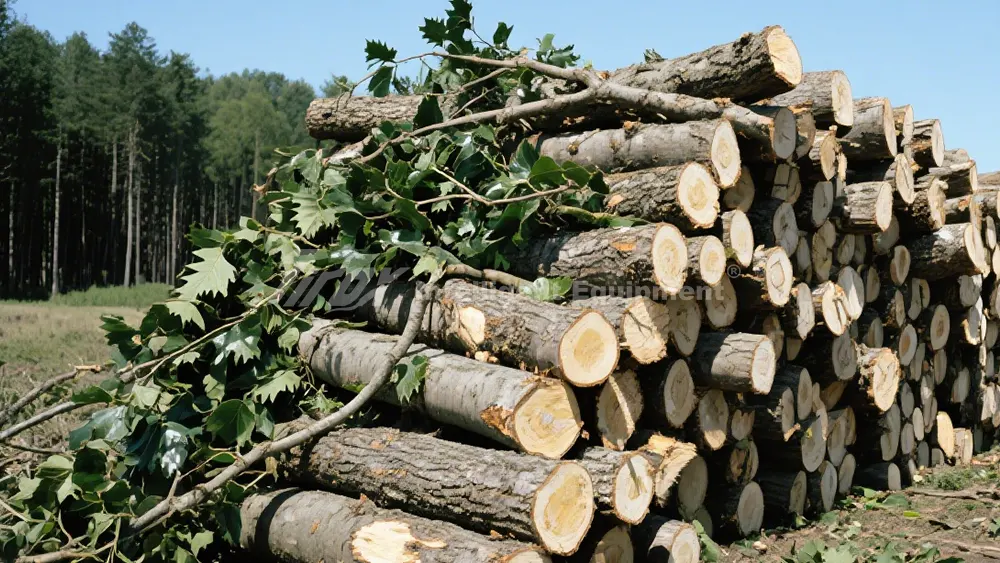
Through my years in this industry, I’ve observed that green, fresh wood often chips beautifully. There’s a common misconception that wood must be dry to be chipped effectively. However, my experience shows the opposite. The moisture in fresh wood actually helps the cutting process.
Advantages of Chipping Green Wood
Chipping green, wet wood comes with several advantages:
- Easier Cutting: The moisture in the wood acts as a natural lubricant, allowing the chipper blades to slice through the material more smoothly. This can reduce wear and tear on the blades compared to chipping very dry, brittle wood, which can create more impact.
- Reduced Dust: Dry wood chipping often generates a significant amount of fine dust, which can be a respiratory hazard and a general nuisance. Chipping wet wood significantly reduces airborne dust, making for a cleaner and safer working environment.
- Improved Output: For some chippers, the added weight and pliability of wet wood can help with the self-feeding mechanism, pulling the material into the cutting chamber more effectively.
Potential Drawbacks with Overly Wet or Muddy Wood
While fresh wet wood is usually fine, there are nuances:
- Excessively Wet/Muddy Wood: If the wood is not just wet, but soaking or caked in mud, this can cause problems. Mud and grit are abrasive and will rapidly dull chipper blades. Also, extremely wet or pulpy material can sometimes contribute to clogging the discharge chute, especially if the chipper isn’t designed for high moisture content.
- Chip Quality: The resulting chips from very wet wood might be slightly less uniform or take longer to dry if their end use requires dry material (e.g., for biomass fuel).
- Corrosion: Leaving wet wood residue in the chipper after use can contribute to rust or corrosion of internal components over time. Always clean your chipper thoroughly after use, especially when processing wet material. Our machines feature strong, corrosion resistant materials, but proper cleaning maintains their longevity. You can find more information about wood chippers on its comprehensive Wikipedia page.
Can you use a wood chipper to shred leaves?
You’ve got piles of autumn leaves, or perhaps leafy branches from a recent trim. You might think, “My chipper handles wood, so surely it can handle leaves too?” This is a common question, and the answer depends heavily on the type of machine.
No, putting large quantities of loose leaves into a standard wood chipper is generally not advisable, as their soft, often moist texture is prone to gumming up the machine and causing clogs rather than producing clean chips, as chippers are primarily designed for solid wood.
From my experience, most wood chippers are not designed for large volumes of loose leaves. I often compare it to trying to cut paper with a bread knife – while technically possible, it is neither efficient nor effective. The blade mechanism of a chipper isn’t suited to the pliable nature of leaves. I’ve heard countless stories of people frustratingly trying to force leaves through only to end up with a blocked machine.
Why Leaves Fail to Chip Cleanly
Leaves, like pine needles and many soft, green materials, are fundamentally different from branches:
- Lack of Rigidity: Chipper blades rely on material having a certain density and rigidity to be cleanly sheared. Leaves are soft and flexible, so instead of being cut, they tend to be torn, pulped, or simply pushed around inside the cutting chamber.
- High Moisture Content & Density: While some moisture is fine in wood, the combination of high moisture and low structural integrity in leaves means they easily compact into a dense, sticky mass. This “leaf paste” clogs the discharge chute and internal components with remarkable efficiency.
- Wrapping: Similar to vines, some stringier leaves or those attached to very thin twigs can wrap around the chipper’s moving parts, exacerbating clogging issues.
The Right Tools for Leaf Management
If your primary goal is to process large volumes of leaves, consider these alternatives:
- Leaf Shredders: These machines are specifically designed for leaves and other soft green waste. They typically use a series of flails or nylon lines to “shred” leaves into fine mulch, which is perfect for composting or as a garden amendment.
- Composting: Leaves are an excellent source of carbon for a compost pile. You can simply rake them into a pile and let nature do its work.
- Mulching Mowers: A lawnmower with a mulching function can chop leaves into small pieces directly on your lawn, returning nutrients to the soil.
- Combination Chipper-Shredders: Some machines are designed as dual-purpose units, featuring both a chipping intake for branches and a separate shredding hopper for leaves and other green debris. If you have both types of material, this might be a viable option, but it’s crucial to check the shredding capacity for leaves.
For any specific questions on how our TIROX equipment handles different materials, feel free to contact our support team. We pride ourselves on our 24/7 after-sales support because we understand that clear guidance prevents costly downtime.
Can you use a wood chipper for hay?
You might have excess hay, perhaps old bales or loose straw, and you’re looking for a way to reduce its volume or process it for other uses. The powerful shredding action of a chipper might seem like a solution.
No, a standard wood chipper cannot be used for hay; its design for cutting solid wood with sharp blades is fundamentally incompatible with the long, fine, fibrous strands of hay, which will immediately wrap, tangle, and severely clog the machine’s internal mechanisms.
From my 22 years of designing and building wood chippers, I can unequivocally state that hay is one of the worst materials you can put into a standard chipper. It is simply not what the machine was engineered to do. I often tell people that a wood chipper is a cutting tool for rigid material, not a shredder for fibrous non-rigids.
Why Hay is a Bad Fit for Wood Chippers
The reason hay and similar fibrous materials (like straw or even long grass clippings) are unsuitable for wood chippers goes back to the basic mechanics of how a chipper operates:
- Wrapping Hazard: Hay consists of long, thin, flexible strands. When fed into a chipper, these strands do not get cut. Instead, they quickly wrap around any rotating part they encounter – the feed rollers, the cutting drum or disc, and even the shaft. This creates an almost immediate, impenetrable tangle.
- Severe Clogging: Once wrapped, hay forms a dense, matted lump that completely blocks the feed path and the discharge chute. This brings the machine to a halt. Clearing a hay clog can be exceptionally difficult, requiring significant disassembly and manual extraction of the matted material.
- Safety Risks: Forcing hay into a chipper can cause the engine to stall under severe load, or even cause kickback of the material if the machine tries to process it. These situations increase the risk of injury to the operator.
- No Clean Output: Even if some hay were to somehow pass through, it would not be “chipped.” It would be a mangled, inefficiently processed mess, not useful for any purpose where uniform material is required.
What to Use Instead of a Wood Chipper for Hay
If you need to process hay or straw, consider equipment designed for fibrous agricultural materials:
- Chaff Cutters/Bale Shredders: These machines are specifically built to cut or shred hay, straw, and other fodder into smaller pieces, ideal for animal feed, bedding, or composting. They use different cutting mechanisms, often flails or series of knives, that are better suited to breaking down long fibers without wrapping.
- Composting: Hay is an excellent ‘brown’ material for composting, especially when mixed with ‘green’ materials to maintain the carbon-nitrogen balance.
- Baling: If the goal is volume reduction, re-baling old loose hay into smaller, denser bales might be an option depending on the initial form factor.
Always match the equipment to the material. For wood, our TIROX wood chippers are built to perform, but for hay, you need a different machine.
Conclusion
While fresh pine limbs are ideal for wood chippers, flexible vines are problematic and cause clogs. Wet wood, particularly fresh green wood, generally chips well, but excessively muddy material should be avoided. Leaves and hay are unsuitable for standard wood chippers due to their fibrous nature, which leads to severe clogging, and require specialized shredding equipment.



